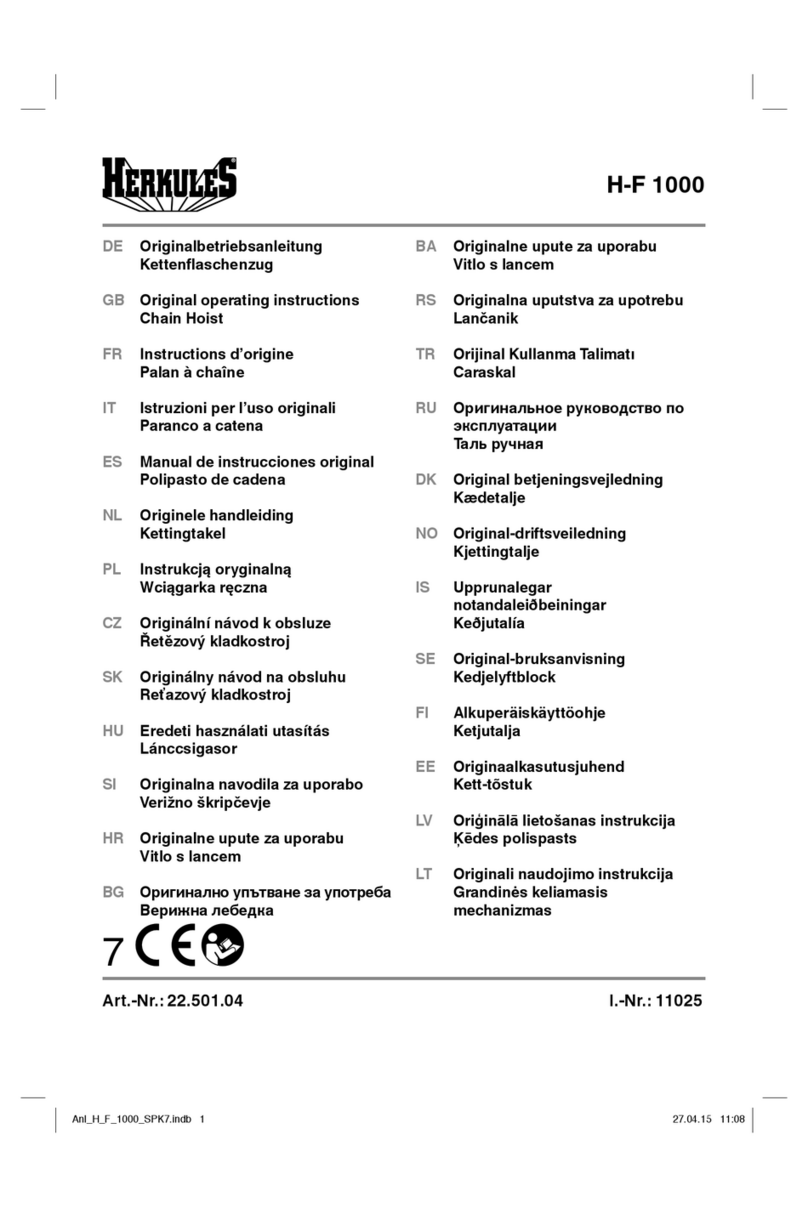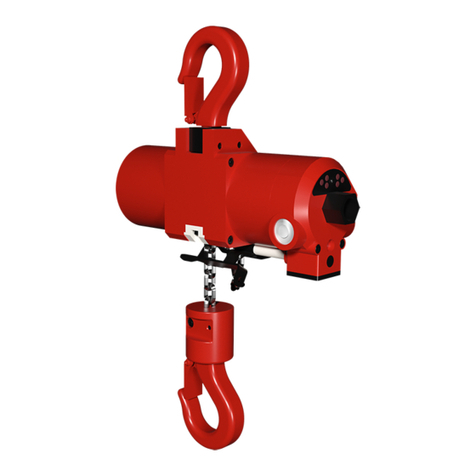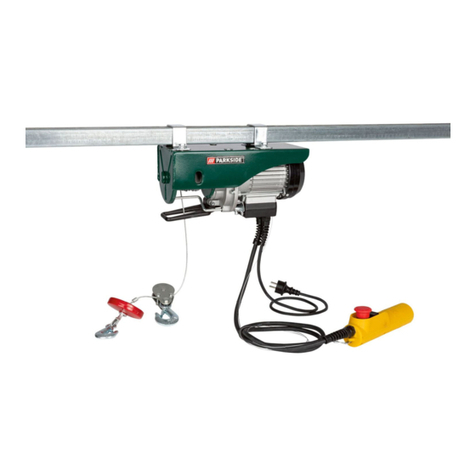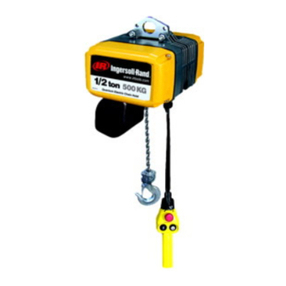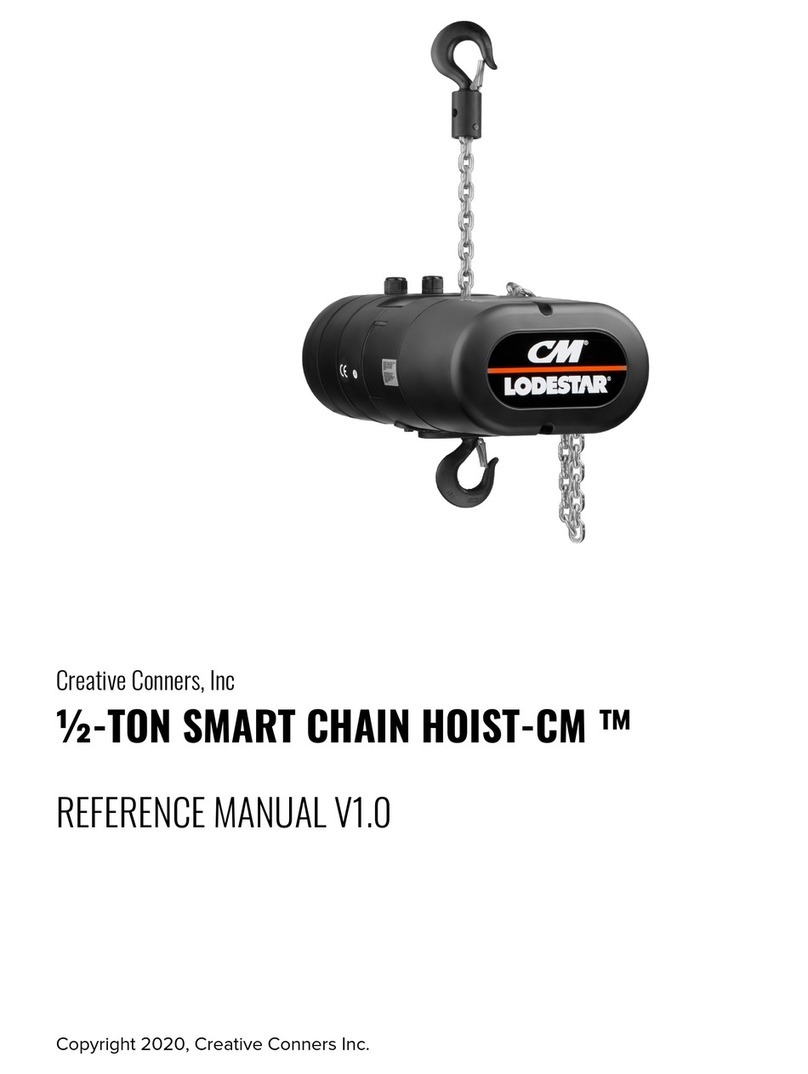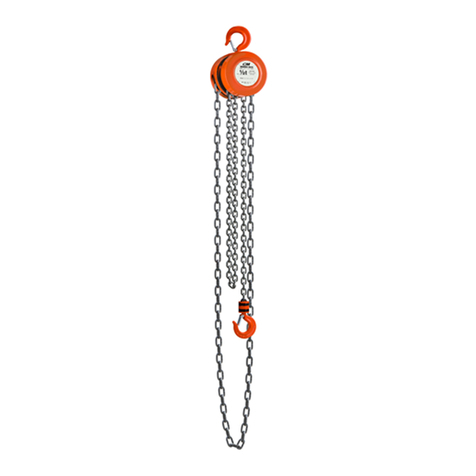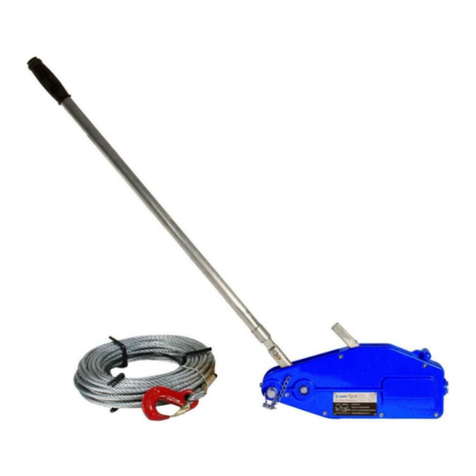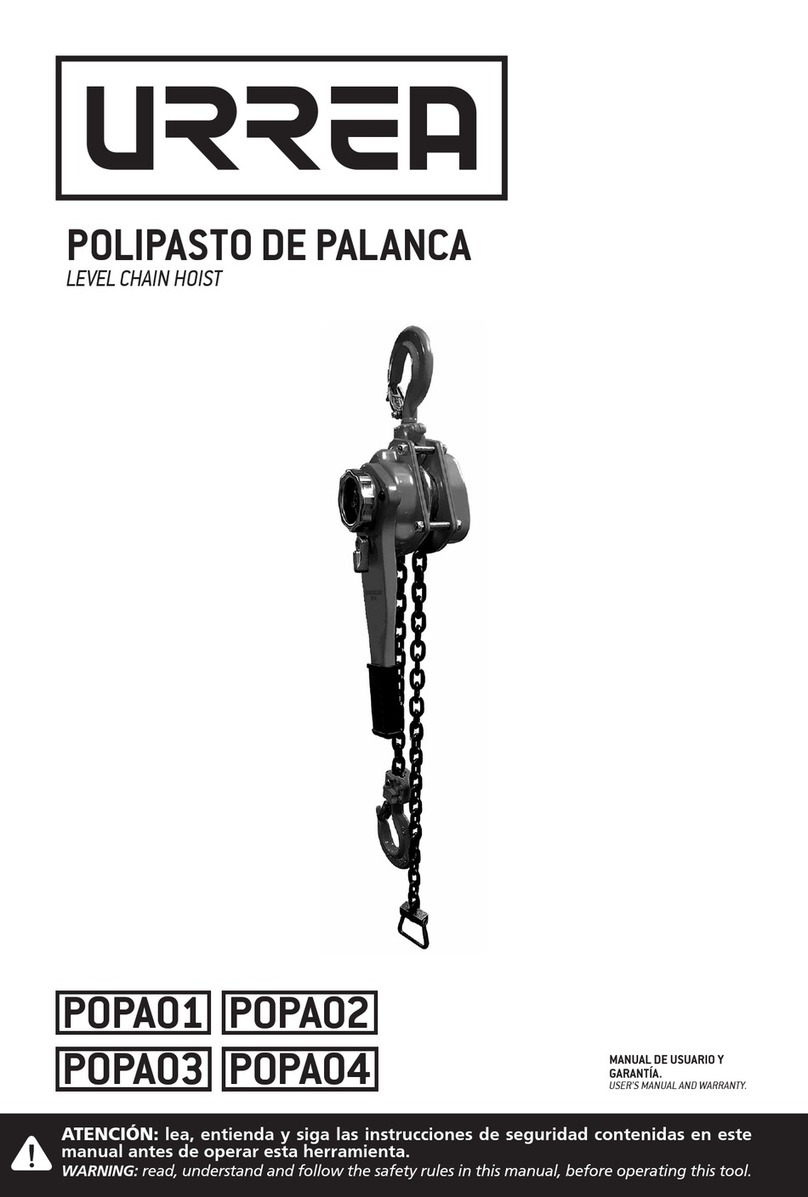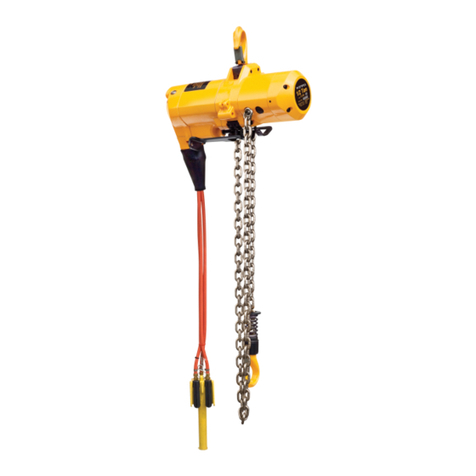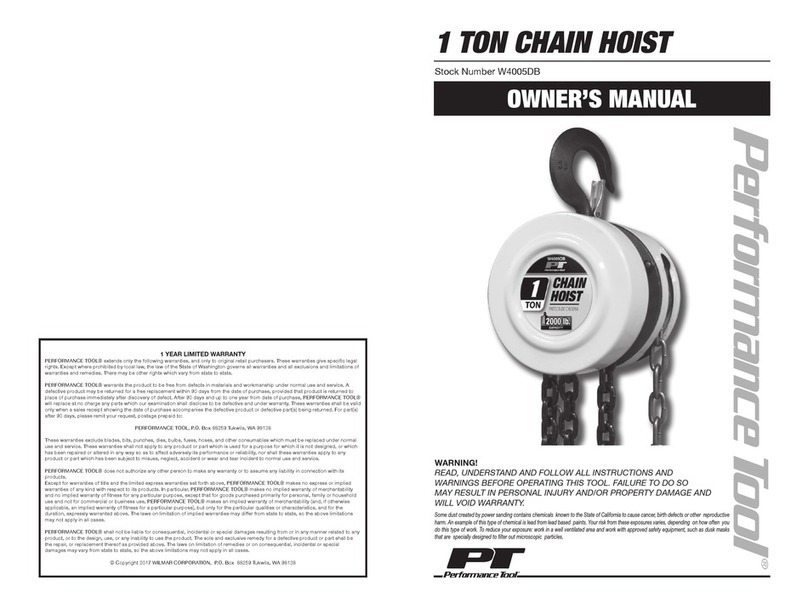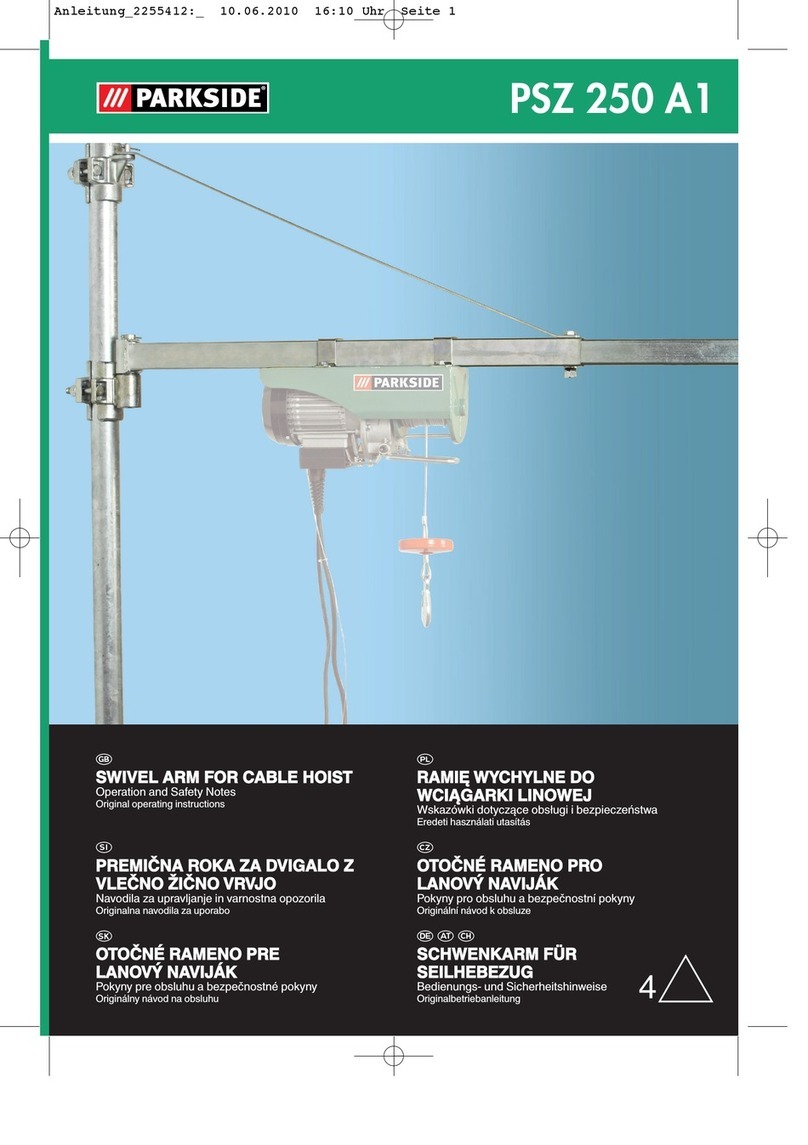
7
ESPAÑOL•Manual de usuario
cadena debe pasar suavemente por la nuez en
ambos sentidos y en cada caso. Si la cadena se
atasca, salta o tiene un funcionamiento ruido-
so, verificar que está limpia y bien engrasada. Si
la anomalía persiste después de la lubricación,
inspeccionar la cadena y los órganos implica-
dos y asegurarse de que no presentan desgaste,
deformación u otros daños, como se describe a
continuación.
3.2. Inspección periódica completa: Se realizará
todos los años, siendo necesario registrar las me-
didas y condiciones exteriores para que puedan
servir de base para una evaluación contínua.
Las cadenas, para su inspección, deberán lim-
piarse por cualquier procedimiento que no pro-
duzca daño. Los métodos a evitar son aquellos
que pudieran provocar daños en la cadena (por
ejemplo, la inmersión en un baño ácido o bási-
co) o disimular grietas u otros defectos super-
ficiales.
Para comprobar el aumento de longitud o alar-
gamiento de la cadena, así como el desgaste en
las zonas de contacto con los eslabones adye-
centes, seguir las siguientes instrucciones:
a) Manteniendo la cadena tensa sobre una base
plana, medir la longitud de cadena sobre 11 es-
labones (1 t), y medir el diámetro de los eslabo-
nes en las zonas de contacto con los eslabones
adyecentes, como se muestra en el dibujo.
b) Comprobar que las medidas tomadas están
dentro de los límites admitidos indicados en la
tabla siguiente:
No se debe reparar la cadena de carga. Cuando
se aprecie alguna de las circunstancias anterio-
res, o cuando se desee aumentar la altura de
elevación del polipasto, se debe sustituir toda
la cadena, siguiendo las instucciones de la pag.
Siguiente.
Toda la cadena debe examinarse eslabón por
eslabón.
La cadena debe ser rechazada cuando un esla-
bón o varios presenten cualquiera de las circuns-
tancias siguientes:
a. Grietas.
b. Entallas o estrías importantes.
c. Deformaciones visibles.
d. Corrosión severa.
e. Depósito que no pueda eliminarse.
MANTENIMIENTO,
CONSERVACIÓN Y REPARACIÓN
Los trabajos de reparación, conservación, man-
tenimiento o transformación deben realizarse
por trabajadores específicamente entrenados
para estas tareas.
5.1. Lubricación
La cadena de carga requiere una lubricación
permanente empleándose para ello aceite flui-
do, no debiendo permanecer seca. Los puntos
de engrase del Polipasto se situan en los ejes
de las nueces de las roldanas o bajeras, para lo
cual disponen externamente de engrasadores.
El polipasto debe ser regularmente revisado e
inspeccionado, para prevenir cualquier avería,
o determinar daños, corrosiones, ..etc. a fin de
garantizar un funcionamiento seguro.
5.2. Plan de inspección y mantenimiento
1. Comprobar el funcionamiento correcto del
freno: Accionar la cadena del mando del poli-
pasto con carga para realizar la función de SU-
BIR, el Polipasto debe emitir un ruido de “click”.
En el momento en que se deja de accionar la
cadena de mando, comprobar que la carga se
mantiene en su posición. Si la carga desciende li-
geramente, probablemente tenaga aceite en el
disco de freno. Al accionar la cadena de mando
del Polipasto con carga para realizar la función
de BAJAR el Polipasto debe bajar la carga suave-
mente sin emitir ruidos.
2. Estado del Gancho de carga: Comprobar que
el gancho de carga está en buen estado, y no
tiene grietas, entallas o estías, deformación per-
manente, corrosión severa o desgastes. Compro-
bar que el gatillo de seguridad está instalado en
el gancho y cierra correctamente.
3. Verificación y características de las cadenas. La
norma UNE-58-523-88, establece las verificacio-
nes a realizar en la cadena y diferencia dos tipos
de inspección:
3.1. Inspección frecuente o visual: Se realiza-
rá todos los meses, no siendo necesario que su
resultado quede registrado. Examinar primera-
mente la cadena en toda su longitud útil a fin de
detectar todos los signos de desgaste,
deformación o daños exteriores. A continuación
hacer funcionar el equipo en vacío y bajo carga
tan próxima como sea posible a la carga nomi-
nal de servicio en los sentidos, observando el
funcionamiento de la cadena y de la rueda. La
